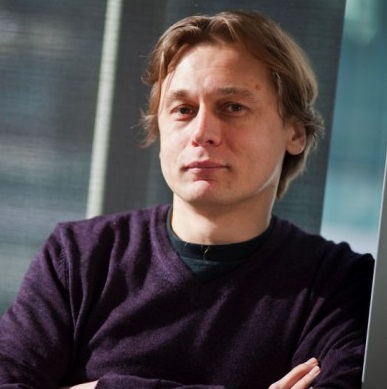Vadim Gladyshev

The Gladyshev lab research interests focus on redox biology and trace elements as applied to cancer, aging and male reproduction. They are trying to understand the mechanisms of redox regulation of cellular processes by studying reactive oxygen species (ROS) and thiol oxidoreductase functions of cellular components. Little is known of what the specific targets of ROS are and how oxidant and antioxidant signals are transmitted in the cell. To understand mechanisms of redox control, the Gladysehv lab needs to know the identities and functions of most of the participants in the redox process. Thus, they are developing and employing various bioinformatics approaches and carrying out genome sequencing, proteomics and functional genomics studies, which are followed with in vitro and in vivo tests of the identified targets. They are particularly interested in the redox control that involves specific and stochastic oxidation of cysteine and methionine residues in proteins.
In mammals, major redox systems are dependent on the trace element selenium, which is an essential component of various redox enzymes in thioredoxin, glutathione and methionine sulfoxide reduction pathways. Selenium is present in proteins in the form of the 21st amino acid, selenocysteine, encoded by UGA codon. Selenocysteine can be viewed as redox super-cysteine because it is only used as the catalytic residue in oxidoreductases. Because UGA is also a stop signal, selenoprotein genes are typically misannotated in sequence databases. To overcome this problem, they identify these genes by genome-wide searches for structural and thermodynamic properties of specific RNA structures and independently by searches for selenocysteine/cysteine pairs in homologous sequences. Subsequently, the Gladyshev lab characterizes functions, regulation and specific targets of selenoproteins and other oxidoreductases to gain a system-wide view on selenium metabolism and redox regulation of cellular processes.
The Gladyshev lab is expanding their research on the basic mechanisms of aging, which they characterize using methods of biochemistry and bioinformatics and utilizing model organisms, primarily yeast and fruit flies. They also characterize the methionine sulfoxide reductase system, which is a protein and metabolite repair system. More generally, they think aging is the consequence of accumulation of damaged biomolecules in cells and organisms. Therefore, understanding the mechanisms by which organisms deal with damage accumulation and how these processes themselves deteriorate is crucial to an understanding of the aging process.
The lab also studies the 15 kDa selenoprotein (Sep15), which is involved in the quality control of protein folding in the endoplasmic reticulum. They identified Sep15 as a candidate protein that mediates the cancer chemopreventive effect of selenium. The lab is characterizing its function and role in cancer prevention to identify a mechanism by which dietary selenium decreases cancer incidence. Another project involves functional characterization of animal thioredoxin reductases. Mammals have three (cytosolic, mitochondrial and spermatid-specific) thioredoxin reductases; each of them occurs in multiple forms generated by alternative first exon splicing. The Gladyshev lab identified one of them as thioredoxin-glutathione reductase, which is involved in male reproduction.
The Gladyshev lab hopes that their studies will provide a better understanding of the role of redox processes in physiological and pathophysiological states, particularly with regard to aging, cancer, and male reproduction, and will lead to new therapeutic and disease-preventive agents.
In mammals, major redox systems are dependent on the trace element selenium, which is an essential component of various redox enzymes in thioredoxin, glutathione and methionine sulfoxide reduction pathways. Selenium is present in proteins in the form of the 21st amino acid, selenocysteine, encoded by UGA codon. Selenocysteine can be viewed as redox super-cysteine because it is only used as the catalytic residue in oxidoreductases. Because UGA is also a stop signal, selenoprotein genes are typically misannotated in sequence databases. To overcome this problem, they identify these genes by genome-wide searches for structural and thermodynamic properties of specific RNA structures and independently by searches for selenocysteine/cysteine pairs in homologous sequences. Subsequently, the Gladyshev lab characterizes functions, regulation and specific targets of selenoproteins and other oxidoreductases to gain a system-wide view on selenium metabolism and redox regulation of cellular processes.
The Gladyshev lab is expanding their research on the basic mechanisms of aging, which they characterize using methods of biochemistry and bioinformatics and utilizing model organisms, primarily yeast and fruit flies. They also characterize the methionine sulfoxide reductase system, which is a protein and metabolite repair system. More generally, they think aging is the consequence of accumulation of damaged biomolecules in cells and organisms. Therefore, understanding the mechanisms by which organisms deal with damage accumulation and how these processes themselves deteriorate is crucial to an understanding of the aging process.
The lab also studies the 15 kDa selenoprotein (Sep15), which is involved in the quality control of protein folding in the endoplasmic reticulum. They identified Sep15 as a candidate protein that mediates the cancer chemopreventive effect of selenium. The lab is characterizing its function and role in cancer prevention to identify a mechanism by which dietary selenium decreases cancer incidence. Another project involves functional characterization of animal thioredoxin reductases. Mammals have three (cytosolic, mitochondrial and spermatid-specific) thioredoxin reductases; each of them occurs in multiple forms generated by alternative first exon splicing. The Gladyshev lab identified one of them as thioredoxin-glutathione reductase, which is involved in male reproduction.
The Gladyshev lab hopes that their studies will provide a better understanding of the role of redox processes in physiological and pathophysiological states, particularly with regard to aging, cancer, and male reproduction, and will lead to new therapeutic and disease-preventive agents.
Country:
USA